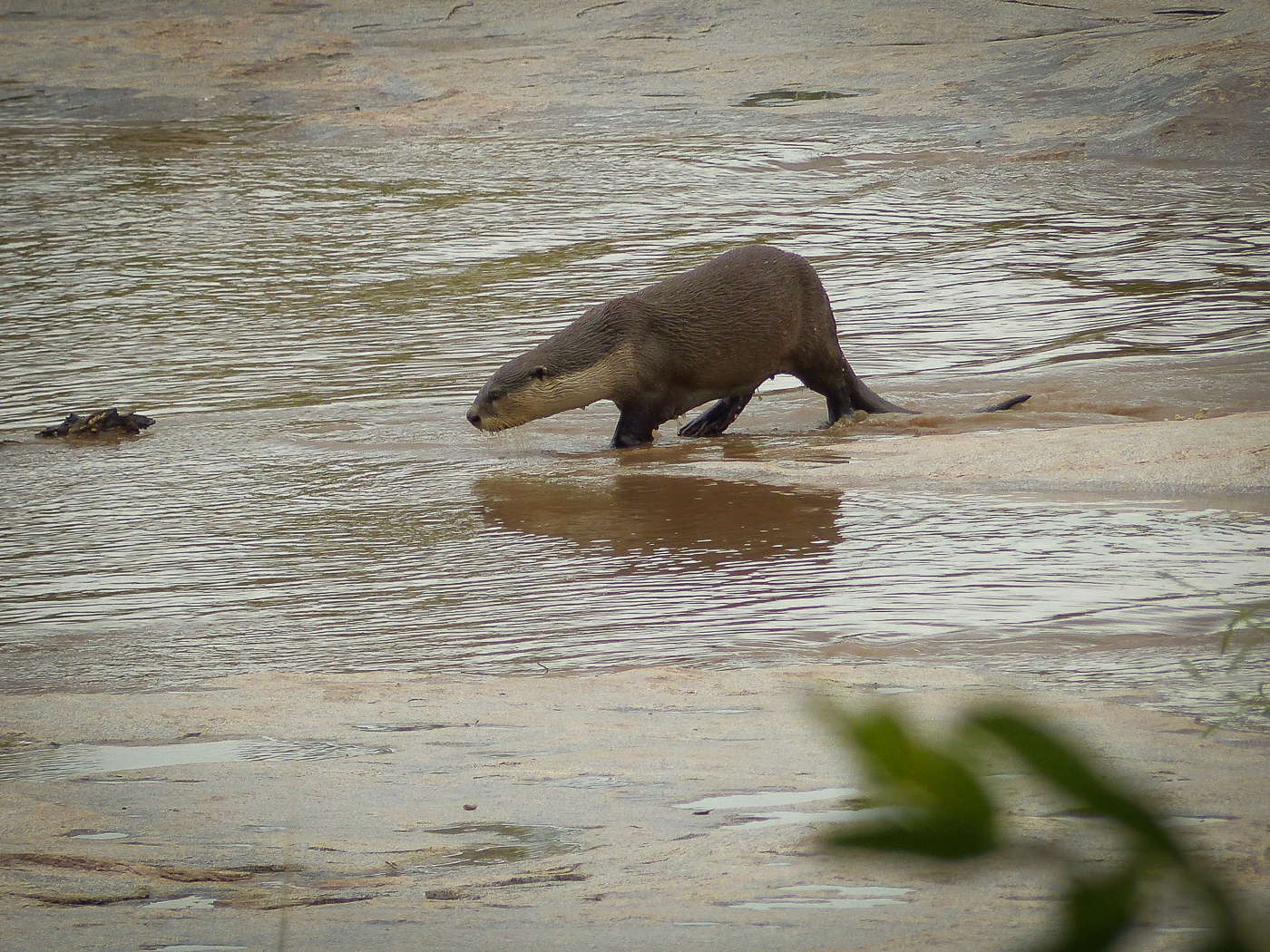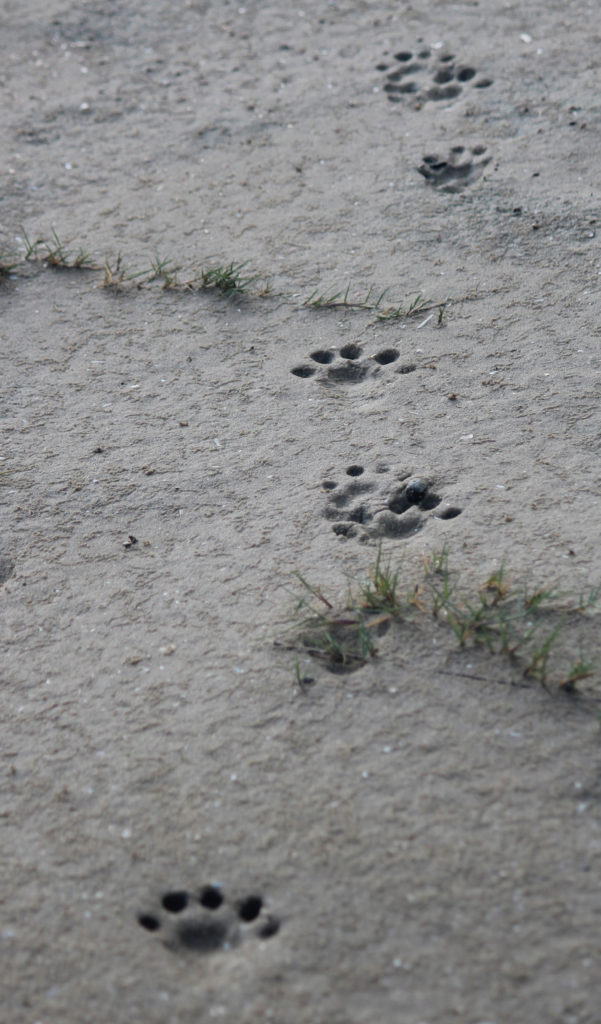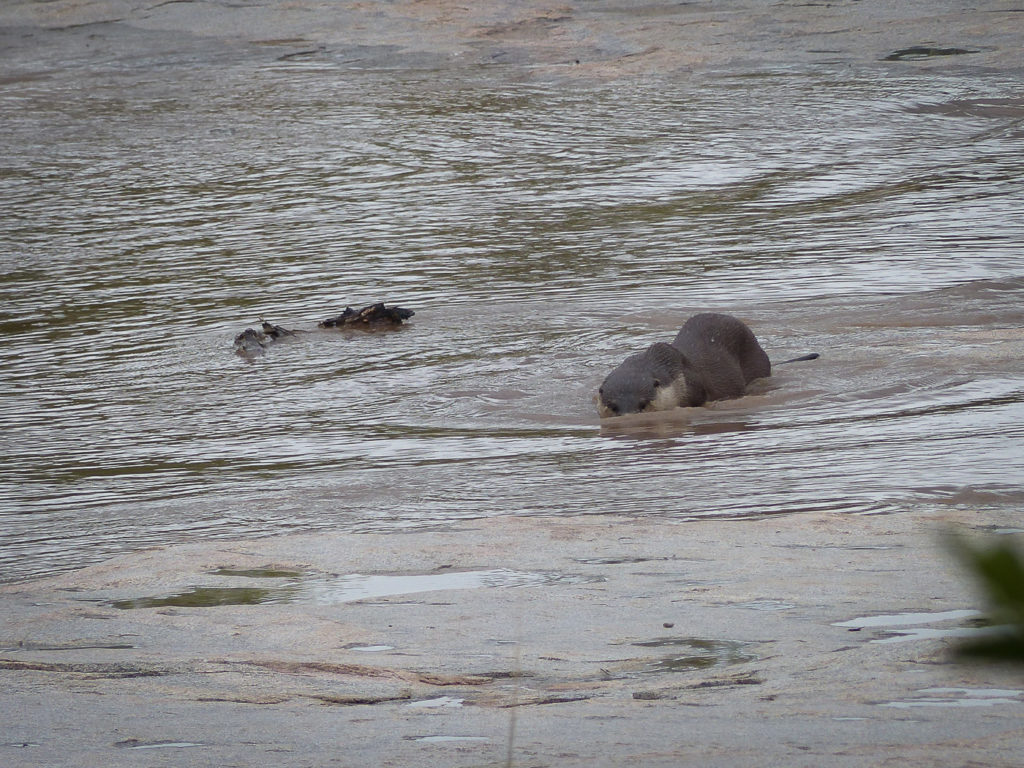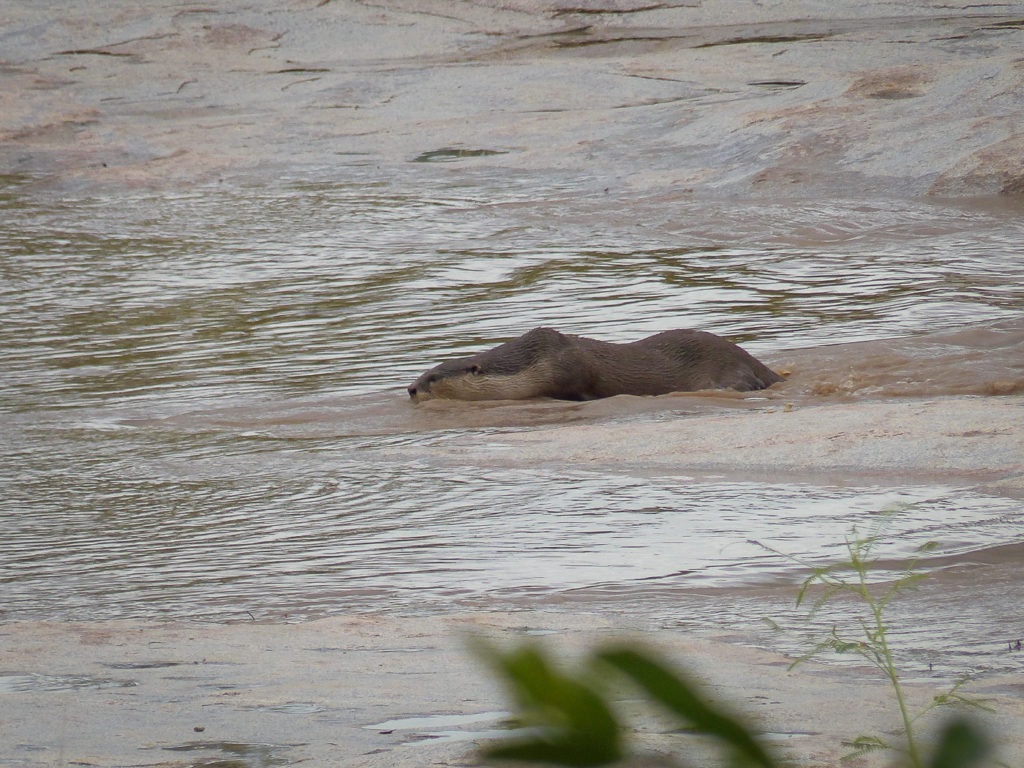
Above: The fantastic view Chris had of the otter from the Granite Camp deck. This photograph was actually taken by a guest staying in the camp at the time.
Otters are known for their elusive behaviour and can have you in a tizz trying to glimpse and photograph them. It can take a lifetime or one lucky second. Discover the allure of the otter in this story, Otter Joy, written by Amy Attenborough, as played out at Londolozi Private Game Reserve.
When Chris Goodman, Londolozi’s Habitat Manager, was a little boy, he went on a fishing trip to Mafikeng with his father. In the middle of the night they woke up to the sound of dogs barking. Shining a spotlight towards their keep net revealed three sets of eyes. Chris’ dad told him they were otters! Knowing they were there but not really being able to see them created instant intrigue for Chris and fuelled his desire to see one in the wild from very early on in his life. Little did he know that the knowledge they were there but not really seeing them would be a lasting trend for many years to come.
As a young adult, Chris travelled to the United Kingdom. There he caught a glimpse of an otter but it was hardly a great sighting and they weren’t the same species of African/Cape Clawless Otter that we get here in South Africa. So when Chris arrived at Londolozi almost a decade ago and was told that otters are virtually crawling all over the river, he set his heart on finding one.
Being shy creatures, otters often stick to the dense reeds in the river. If spotted, they will disappear below the surface, using the current to wash downstream and pop up further along the river to avoid being detected.
Late one night, at one of the crossing points in the river, Chris saw movement, the water rippling and some eyes glancing back at him in the spotlight. The next day he returned to check and sure enough, there were otter tracks right where he had seen the eyes. Once again he had missed a proper view. Because he had become so desperate to see one, it became a bit of a running joke in the lodge. People would be standing on one of the camp decks overlooking the river and someone would shout “otter!”. Chris would almost twist his head off trying to see where the spotter was looking, only for everyone to collapse in a heap of laughter.
Tracks of a Cape Clawless Otter. Although these can be found all over the river, the animal that leaves them is not as prolific.
It got so bad that when one of the brand new trainees, who had only been at Londolozi for a few days, legitimately saw one, he radioed Chris, who almost tore a hamstring on his rush down to the deck; sure enough, just a few seconds before he got there, the otter vanished, leaving the trainee sweating and desperately trying to convince Chris (then Head Ranger) that he hadn’t been having him on.
So when Chris got a radio call just a few days ago to say that an otter had been seen from Varty Camp, it comes as no surprise that he was fairly sceptical. Having nothing to lose though, he shot down to the camp and as he stepped foot onto the deck, the team that had gathered groaned in unison. “Ahh, it’s just disappeared”.
Chris grabbed a pair of binoculars and frantically began scanning the river. After a few tense moments, through a tiny gap in the reeds, he saw it. As Chris describes it, “the otter was rummaging around in the mud.” Rubbing it’s fore-feet around in the shallows it was trying to disturb fish and crabs, which it could then snap up to eat. Chris grabbed the opportunity and shot across to Granite Camp, which is further west along the river and closer to where the otter was feeding. As he got to the deck, he caught the otter unawares where it was out in the open, on the rocks just to the east of the main deck. “It did this crazy inchworm-like manoeuvre away from me and dived into the water. The whole sighting must have lasted all of three seconds”.
Otters feed on animals such as crabs, fish, frogs and worms. They dive after prey to catch it, then swim to shore again, where they eat. Their fore paws come in handy as searching devices and are great tools for digging on the muddy bottoms of ponds and rivers, picking up rocks and looking under logs. Extremely sensitive whiskers called vibrissae are used as sensors in the water to pick up the movements of potential prey.
“What I was shocked by was how much white they have underneath their chin and chest. It’s like a crazy bright angora white, it’s really beautiful. The other thing that struck me was how big they are. It was virtually the size of a labrador.”
The inchworm manouevre Chris was describing as the otter heads back to the main stream.
“The epic thing about this sighting for me was that in order to see one you have to be in the right place at the right time. They’re not an animal that you can just track and find – it requires chance and so I feel kind of blessed. It was such a great sighting and I had it all to myself. It felt like nature threw me a bone after having been hard on me with the otter one for so long.”
Chatting to Chris, it seems what it’s shown him is that out here you’ve never seen it all. These otters, the size of labradors (we’re skeptical about this claim of Chris’), have been in and around the front of his house for the last ten years and yet they had managed to elude him until now. “That is the real joy of living out here for me,” he says, “you can never know when it is that something new will surprise you.”
Photographs by Granite Camp guest, William Ferre.



